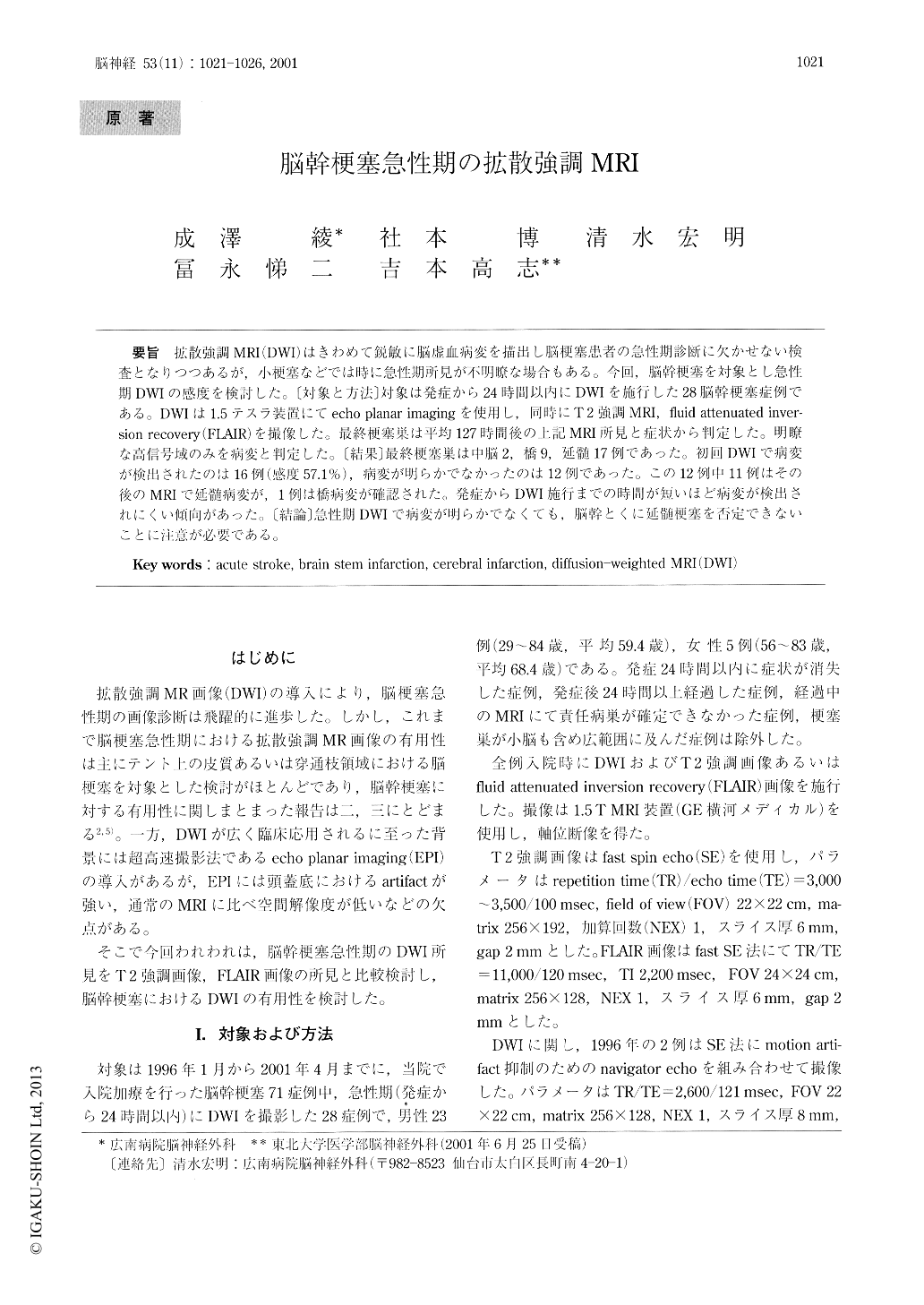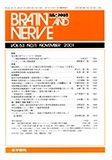Japanese
English
- 有料閲覧
- Abstract 文献概要
- 1ページ目 Look Inside
拡散強調MRI(DWI)はきわめて鋭敏に脳虚血病変を描出し脳梗塞患者の急性期診断に欠かせない検査となりつつあるが,小梗塞などでは時に急性期所見が不明瞭な場合もある。今回,脳幹梗塞を対象とし急性期DWIの感度を検討した。〔対象と方法〕対象は発症から24時間以内にDWIを施行した28脳幹梗塞症例である。DWIは1.5テスラ装置にてecho planar imagingを使用し,同時にT2強調MRI,fiuid attenuated inver-sion recovery(FLAIR)を撮像した。最終梗塞巣は平均127時間後の上記MRI所見と症状から判定した。明瞭な高信号域のみを病変と判定した。〔結果〕最終梗塞巣は中脳2,橋9,延髄17例であった。初回DWIで病変が検出されたのは16例(感度57.1%),病変が明らかでなかったのは12例であった。この12例中11例はその後のMRIで延髄病変が,1例は橋病変が確認された。発症からDWI施行までの時間が短いほど病変が検出されにくい傾向があった。〔結論〕急性期DWIで病変が明らかでなくても,脳幹とくに延髄梗塞を否定できないことに注意が必要である。
Diffusion-weighted magnetic resonance imaging (DWI) provides one of the earliest demonstrations of ischemic lesions. However, some lesions may be missed in the acute stage due to technical limitation of DWI. We therefore conducted the study to clarify the sensitivity of DWI to acute brain stem infarctions. Twenty-eight patients with the final diagnosis of brain stem infarction (midbrain 2, pons 9, medulla oblongata 17) who had been examined by DWI within 24 hours of onset were retrospectively analyzed for how sensi-tively the initial DWI demonstrated the final ischemic lesion.

Copyright © 2001, Igaku-Shoin Ltd. All rights reserved.


